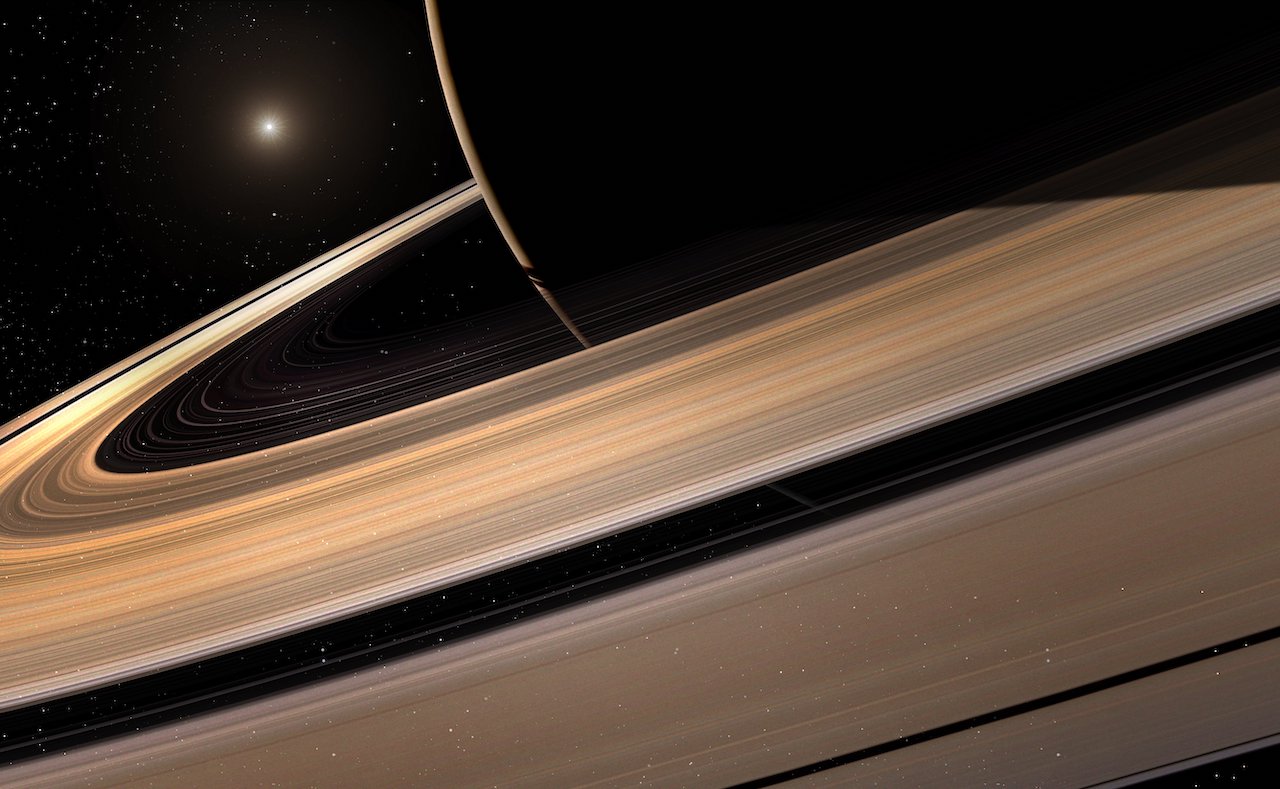What are Saturn's rings made of?
Billions of icy particles orbit the planet to create Saturn's rings

Distant images make Saturn's rings appear to be one solid band of rock. However close flybys and studies have provided detailed images of the rings' arrangement, with precise snaps of some of the unique objects orbiting Saturn.
Saturn's rings are an array of rocky and icy fragments, which scientists believe to be pieces of moons, asteroids and comets, according to NASA. The theory is that these giant rocks were shattered into fragments under the force of Saturn's gravity. The result is a combination of huge, mountain-sized rocks and tiny particles of dust. Many of the larger objects in the planet's rings are coated in a layer of dust.
Before 1979, scientists thought that Saturn was the only planet in the solar system with rings, according to the Encyclopedia of Physical Science and Technology. Now we know that, while all the planets attract space objects into rings, Saturn's rings are the brightest and lie close together.
Saturn's bright rings carry space fragments that are younger than the planet itself. According to a 2019 report by the BBC, data from the US-European Cassini mission revealed that the rings could be as young as 10 million years old and no older than 100 million years.
What are the seven rings of Saturn?
When viewed from a distance, Saturn displays seven distinctive rings, according to NASA. These are simply named as the first seven letters of the alphabet. This ordering doesn't correspond to their distance from the planet, but the order in which they were discovered.
Each ring contains orbiting matter. Combined, the rings stretch across thousands of miles of space.
The first three rings to be discovered (A, B and C) are the easiest to spot, due to them being bright, main rings of the planet, according to NASA Science. Meanwhile, the D ring is extremely dim and lies closest to the planet. The E ring is the largest and outermost ring, spanning 621,370 miles (about one million kilometers) and lying next to another faint ring, G. Saturn’s F ring is made up of many narrow rings. As each ring contains multiple kinks and bright clusters, this ring can produce a braided pattern, according to Space.com.
Get the world’s most fascinating discoveries delivered straight to your inbox.
The mini moons of Saturn's rings
Small, low density moons can be found in Saturn's rings:
When were Saturn’s rings discovered?
When Galileo Galilei became the first person to lay eyes on Saturn's rings in 1610, he was unsure what they were, according to the European Space Agency. Looking through his telescope, Galileo described them as ears, as they seemed to appear on opposite sides of the planet.
45 years later, it was a Dutch astronomer called Christiaan Huygens who correctly proposed that these were rings, in the shape of disks, that encircled Saturn. According to NASA, Huygens was able to observe finer details than Galileo could as he had a stronger telescope.
Additional resources
To learn more about how Saturn is losing its rings, you can watch this video by NASA Goddard. Additionally, read all about the Cassini mission on this NASA Science page.
Bibliography
"Saturn Ring". Encyclopedia of Physical Science and Technology (Third Edition), (2003). https://www.sciencedirect.com/topics/earth-and-planetary-sciences/saturn-ring
"Structure, stability and evolution of Saturn's rings". Nature (1984). https://www.nature.com/articles/309333a0
"The Structure of Saturn's Rings". Saturn from Cassini-Huygens. https://link.springer.com/chapter/10.1007/978-1-4020-9217-6_13

Ailsa is a staff writer for How It Works magazine, where she writes science, technology, history, space and environment features. Based in the U.K., she graduated from the University of Stirling with a BA (Hons) journalism degree. Previously, Ailsa has written for Cardiff Times magazine, Psychology Now and numerous science bookazines. Ailsa's interest in the environment also lies outside of writing, as she has worked alongside Operation Wallacea conducting rainforest and ocean conservation research.


